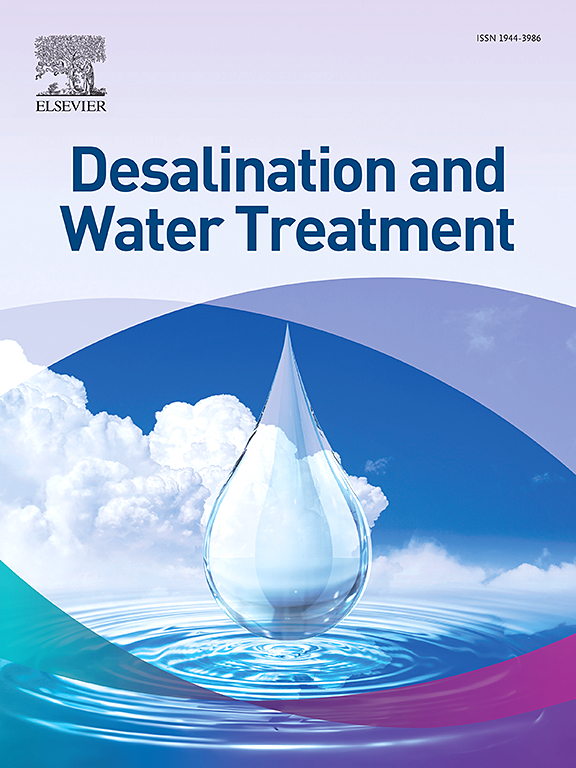Treatment of water contaminated by cadmium using low-cost and eco-friendly alginate/Moroccan clay composite beads
IF 1
4区 工程技术
Q4 ENGINEERING, CHEMICAL
引用次数: 0
Abstract
This study aims to investigate the batch mode adsorption of Cd(II) from an aqueous solution using two adsorbents: raw clay without any treatment (NC) and clay composite beads (CCB). The adsorbents before and after adsorption were characterized using several techniques such as X-ray fluorescence, X-ray diffraction, Fourier-transform infrared, scanning electron microscopy, energy-dispersive X-ray, thermogravimetric analysis, differential thermal analysis and zeta potential. The influence of the experimental parameters of adsorption such as mass, pH, concentration, contact time, and temperature were studied to optimize them. The results of the kinetic study suggest that the adsorption of Cd(II) by NC and CCB can be explained by the pseudo-second-order kinetic model. The time after which the adsorption reaction does not evolve was 120 min for both adsor-bents. The Langmuir isotherm model was found to be the most adequate for Cd(II) adsorption, with maximum adsorption capacities of 42.97 and 100.8 mg·g –1 for NC and CCB, respectively. The thermodynamic parameters indicated that the adsorption mechanism of Cd(II) on the surface of NC and CCB was endothermic, spontaneous, and favorable with a random distribution of Cd(II) ions at the solid/liquid interface. The regeneration study showed that NC and CCB are recyclable with. These findings suggest that NC and CCB could be used as effective and environmentally friendly adsorbents for treating heavy metal contamination in effluents.利用低成本、环保的海藻酸盐/摩洛哥粘土复合微珠处理镉污染水
本文章由计算机程序翻译,如有差异,请以英文原文为准。
求助全文
约1分钟内获得全文
求助全文
来源期刊

Desalination and Water Treatment
工程技术-工程:化工
CiteScore
2.20
自引率
9.10%
发文量
0
审稿时长
5.3 months
期刊介绍:
The journal is dedicated to research and application of desalination technology, environment and energy considerations, integrated water management, water reuse, wastewater and related topics.
 求助内容:
求助内容: 应助结果提醒方式:
应助结果提醒方式:


